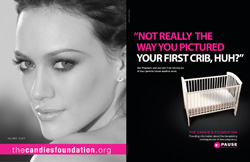I know, it has been a long time since my last blog post, and I truly apologize. For some reason my desire to blog seemed to disappear, but today I got it back, and just at the right time! In my campaigns class, we had guest speaker Kathy Fleming talk to us. She has worked on public relations teams for various health organizations and health clients. So pretty much the perfect person for a health  communication junkie me to get to listen to. Currently her client is U.S. Preventive Medicine. Being that our health care system is crashing and burning right now, I was curious to find out more about this new organization. U.S. Preventative Medicine is launching a Prevention Plan, which is a new, fresh approach to health that focuses more on the prevention of diseas
communication junkie me to get to listen to. Currently her client is U.S. Preventive Medicine. Being that our health care system is crashing and burning right now, I was curious to find out more about this new organization. U.S. Preventative Medicine is launching a Prevention Plan, which is a new, fresh approach to health that focuses more on the prevention of diseas e, and not the cure. Its vision is to make the world a healthier place; its mission is to deliver better and lower health care costs through preventative medicine.
e, and not the cure. Its vision is to make the world a healthier place; its mission is to deliver better and lower health care costs through preventative medicine.
Immediately, I thought that this was a fantastic idea for improving health; clearly, the current system of treating the ill has not been working, as thousands of people go bankrupt from medical bills every year. What the U.S. Preventative Medicine tries to do is stop the disease before it comes, saving thousands of dollars and more importantly, thousands of lives. With the slogan “more good years” the Prevention Plan is an online health improvement program that many employers have been purchasing for their employees. The Prevention Plan enables individuals to determine their top health risks and receive a customized plan and coaching from nurses to lower those risks and become healthier. It allows people to take control of their own health and provides some great incentives to get healthier. Check out the basics of the Prevention Plan: (You can also check out more great videos by clicking here.)
Not only does the Prevention Plan provide priceless benefits to members, it can also help to boost a company’s social image, which is what public relations is all about. Kathy mentioned that one of their target businesses has been Wal-Mart and I think this is a fantastic idea. Wal-Mart always is criticized for treating employees bad and if they purchase the plan and offer it to their employees, they will not only be helping their employees, but they will also improve their social image. A boost in social image would lead to a boost in customers, which essentially means more profits for Wal-Mart. Therefore, the Prevention Plan has great benefits for not only employers, but also employees. Some companies have already taken on the plan to boost their image, such as Sam’s Club. Adding this plan as an option in their online store has attracted tons of media coverage. Check out the video:
To conclude, I am excited about this new approach to healthcare and think that it could really make some major changes. In addition, from a PR standpoint, it is a great way to boost any companies image. The success in the campaign launched by U.S. Preventive Medicine is a good example of how by working for public relations in the healthcare industry you cannot only work to change behavior, you can also work to directly save lives.











